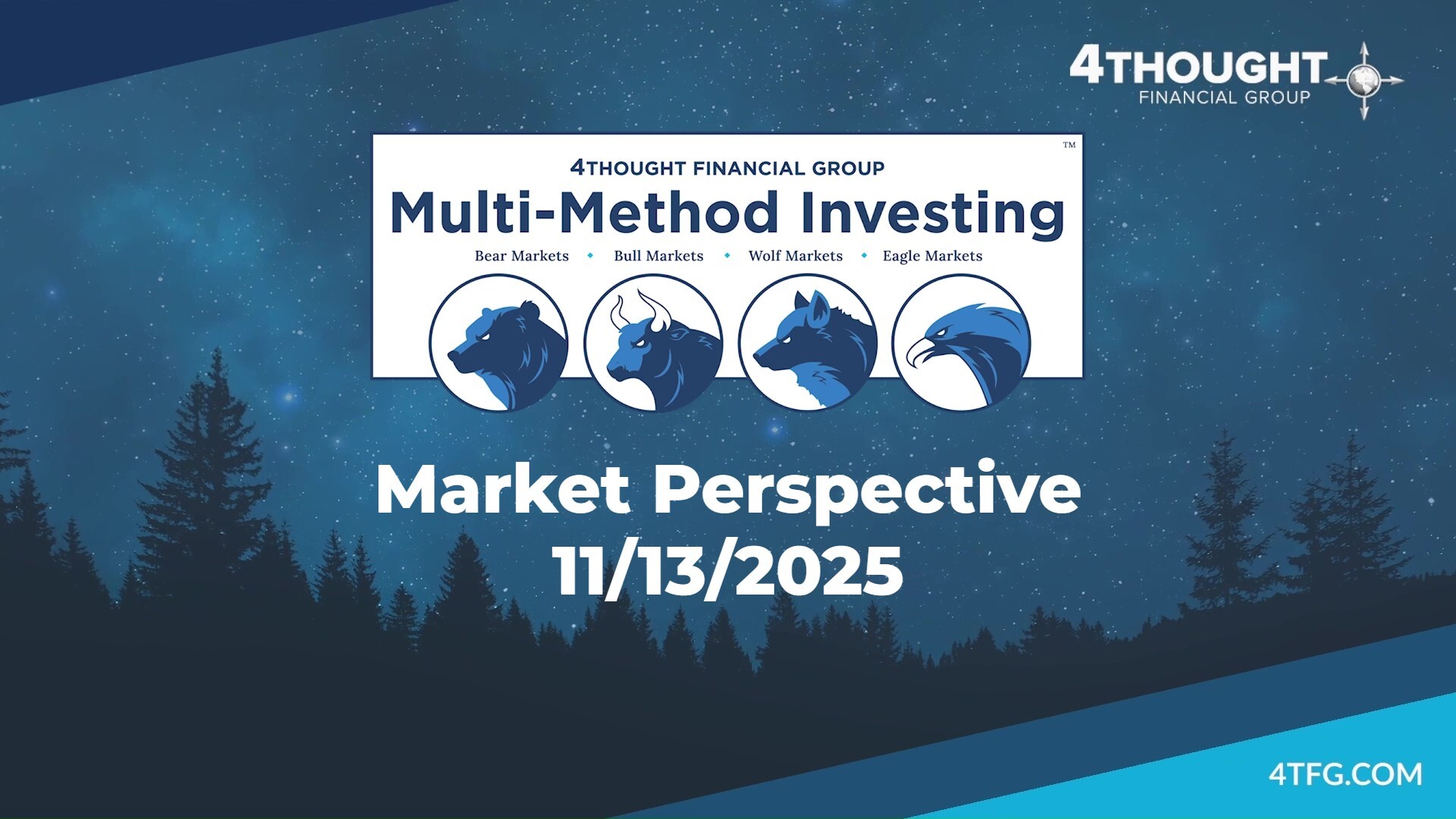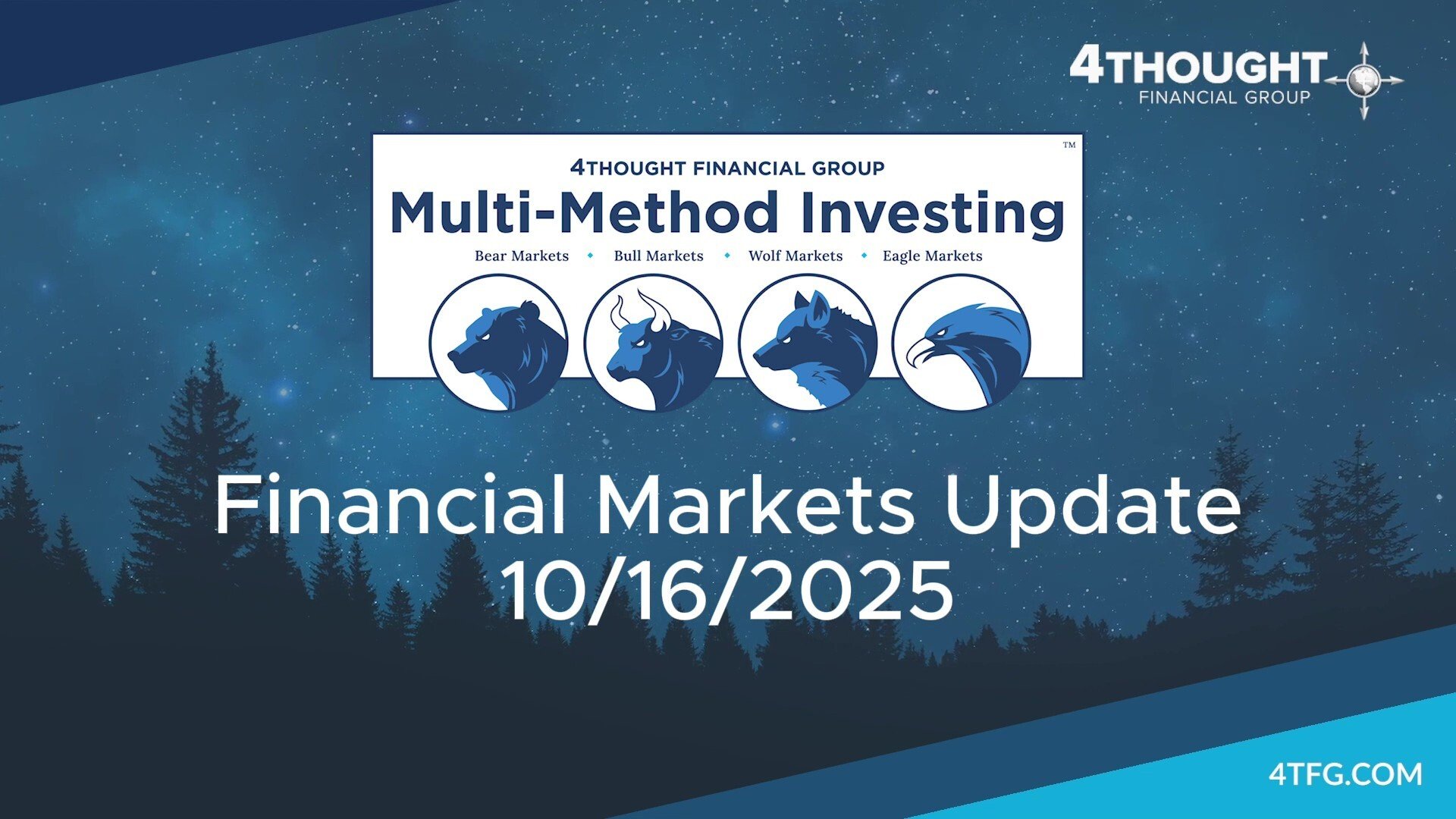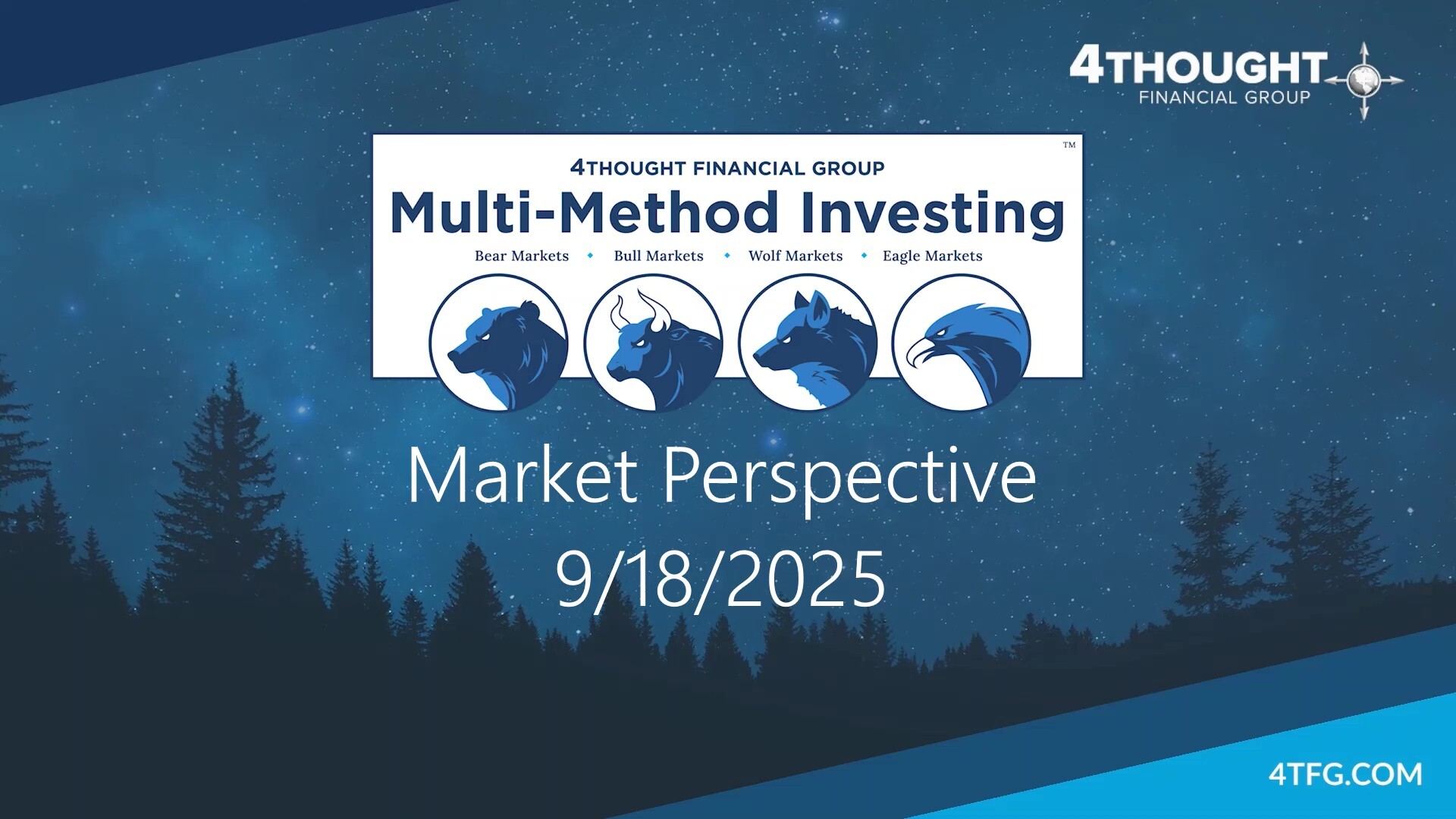4Thought provides you with actionable investment analysis and perspective on the financial markets.
Contact us to determine whether any ideas presented are applicable to your situation before taking any actions with regards to your financial plan or investment portfolio.
Hear from Chief Investment Officer Jesse Mackey in this week's Multi-Method Investing® Market Perspective.
VIDEO TRANSCRIPT:
I’m Jesse Mackey, CIO of 4Thought Financial Group, and this is 4Thought’s Multi-Method Investing® Market Perspective as of May 30th, 2023.
Stocks and bonds of almost all types started January of 2023 with positive advances, but then experienced a lull during February and March. Since then, large cap stocks in the US and developed international markets have experienced a resurgence during the second quarter, with many other asset types (like US small cap stocks and most bonds) lagging considerably. This represents a widening divergence in performance that's contrary to the near-synchronized movement of asset prices that characterized the preceding several months. This comes after stocks ended 2022 with their worst calendar-year performance since 2008 (during the Financial Crisis).
From a broader perspective: On 10/13/22 the S&P 500 (Price Return) Index reached the current maximum intraday draw-down of 27.5% from its 1/4/22 peak price. After a partial recovery and an extended period of relatively tepid movement in the time since then, the index sat 12.73% below the record as of the close of business yesterday. The initial indication of a Bear market on 5/20/22 (based on the technical intraday definition of a 20%+ decline), has very significant implications for portfolio management strategy.
The history of the S&P 500 index since 1950 reveals that once Bear markets have been identified (in which a 20%+ decline from a record peak has occurred), they have continued for an average of an additional 4.61 months and have experienced an average additional cumulative loss of 16.56% until the trough is reached (for a total cumulative drawdown of 33.2%). Six out of thirteen instances of a Bear turned around within 1 month after it was indicated (some as early as the same day), while all others lasted longer (up to a maximum of 1.63 years). As of the date of the deepest trough measured so far (on 10/13/22), 4.87 months had elapsed since Bear market indication, and 1.03 years have elapsed as of today (both measures longer than average).
For long term investors that can afford to wait until a recovering upturn in the market cycle (which most likely already began in October of last year based on historical data), this calls for aggressive deployment of cash and cash equivalents into stocks (and bonds in this case). Long term investors should now consider an immediate deployment of 100% of any idle cash (not needed for short term liquidity or expected upcoming spending). There is no need to wait for further declines, or to use a dollar cost averaging program for idle cash (as was the case in the first 5 months after bear indication). This should be discussed with your advisor to confirm appropriateness for your situation before taking action.
Based on analysis of the complete historical market type data set using our Multi-Method Adaptive algorithmic process, we are now allowing overweight allocations to Strategic Asset Allocation, and underweights to Liability-Driven Investing, Opportunistic Investing and Selective/Concentrated Investing.
From a probabilistic analysis perspective, valuations tell a story that's roughly neutral for most stock types, but more favorable for some bond types. On this basis, most stock types are near fair value. By comparison, most bond types now range from moderately to slightly undervalued. Treasury Inflation Protected Securities now reflect the most attractive pricing relative to the alternatives, while international developed markets stocks are the least attractive. US large cap stocks are the best performing publicly traded broad asset type so far in 2023, while US small cap stocks are the worst.
Against this backdrop the outlook for stocks in general is now positive in the intermediate term based on the overall aggregate of our historical market-type data analysis and quantitative probabilistic analysis.
I hope this was helpful. If you have questions or you’d like to discuss what this means for your particular situation, please contact 4Thought at 516-300-1617 or at info@4tfg.com – and don’t forget to subscribe to our blog feed and our YouTube channel. Thanks for watching, and see you next time.






Leave a Comment